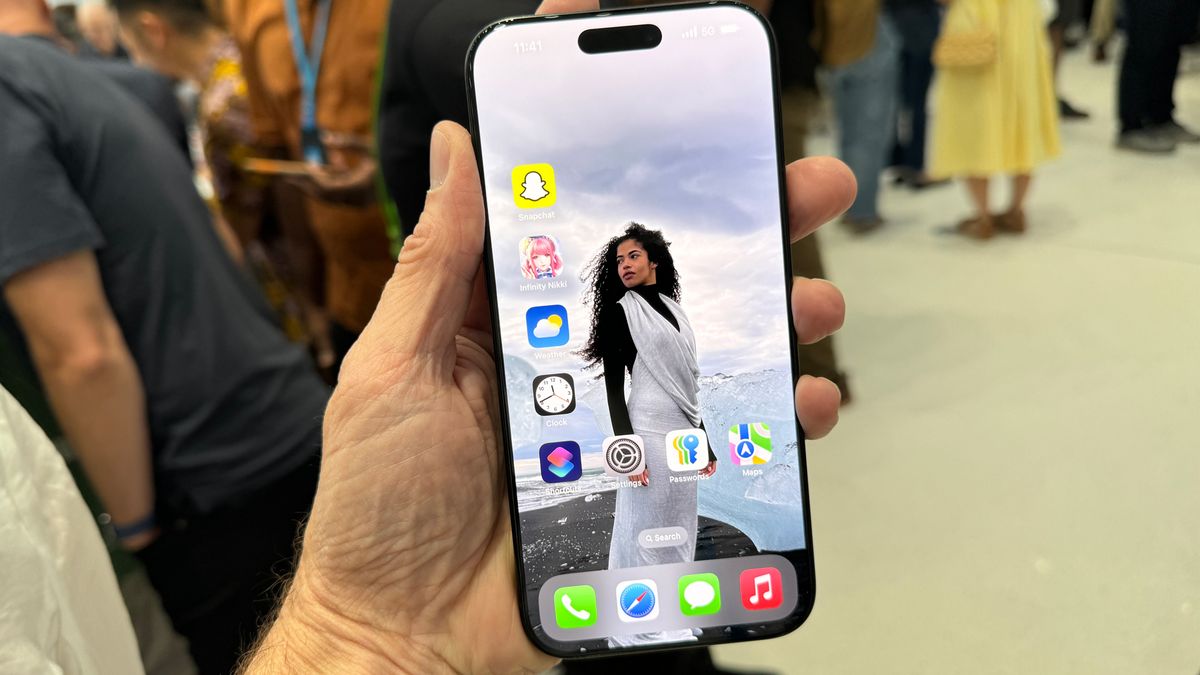An iPhone 16 Pro Max failed this drop test, but that doesn’t have to be your fault

Glass is smooth, shiny, and beautiful—the perfect surface to convey your touch and intent to the brilliant mind within your iPhone 16 Pro Max. But it’s also not indestructible, and can do glassy things like shatter into countless shards when you drop it. At least, that’s the finding of a recent AllState drop test of Apple’s latest line of iPhones.
The US insurance company has been dropping iPhones for 13 years, and reports that the iPhone 16 Pro Max failed its ‘Breakability’ test this year. No iPhone has survived the Allstate Protection Plan drop test in more than a dozen years.
When the company placed the iPhone 16 Pro Max in a special device, dubbed the “Dropbot,” and dropped it face-down onto a sidewalk from a height of six feet, the screen cracked, the display started flickering, and then went black (watch the test for yourself in the video below).
Since haptic responses were still noticeable when touching the screen, there’s a chance that only the display will need to be replaced. When they performed the same test with the back facing down, the glass around the camera array cracked, but the phone remained fully functional otherwise. That’s a better result than the iPhone 15 Pro Max, which was rendered inoperable after being dropped on its back last year.
Of course, AllState, which sells extra protection for mobile devices, has a vested interest in this as well. Potentially proving that the iPhone isn’t concrete proof might make people more likely to consider a protection plan from their company for their new iPhone 16 Pro Max.
The results, however, are a little discouraging. At the launch, Apple said that the second-generation Ceramic Shield, a custom blend of glass developed in conjunction with Corning (they make the Gorilla Glass on most top-end smartphones), is not only 50 percent stronger than the first generation, but also tougher than the glass used on most other smartphones.

I tested both the iPhone 16 Pro Max and iPhone 16 Pro, which are excellent Apple Intelligence smartphones with slightly updated and larger designs. I don’t purposely perform drop tests, though I did accidentally drop the iPhone 16 Pro Max from a height of 3 feet onto a rough floor.
It was, as you might expect, fine. I also put cases on both phones. The iPhone 16 Pro Max is currently in a nice Speck case . They’re incredibly durable, protecting the back, sides, and edges, and since edges and corners are stress points for these edge-to-edge Super Retina XDR displays, they also help protect the glass on top.
The iPhone 16 Pro comes in a silicone case, which offers good protection. However, when I looked at the screen a few days ago, I noticed a scratch running the length of the phone. I promise you, I was not carrying the phone with a diamond or a key in my pocket. I am so careful, and yet there is a scratch.
My point, and perhaps Allstate’s, is that this is glass, and there’s only so much you can do to protect it. As I wrote last month , “It’s still way too easy to scratch our precious phones.” In that case, I was writing about the new Google Pixel 9 , a Gorilla Glass Victus 2-coated phone that also quickly ended up with a zillion scratches.
These tests are simply not conclusive. Allstate used two different phones to perform the front and back drop tests. When the DropBot results were essentially the same as last year, Allstate decided not to do them again. There’s a chance that further testing would have yielded different results. I’ve seen people drop their phones from four or five feet onto the sidewalk, have the devices fall to the ground and somehow survive without a scratch.
While it’s true that the iPhone 16 Pro Max didn’t fare well in these tests, we’ll never know what hundreds of similar drops would have resulted in. As far as I’m concerned, the fragility of these devices isn’t down to a manufacturing flaw, but I do think there’s an element of luck involved. That’s why cases are so popular – they’re the only way to stack the odds in your favor.
I’ve reached out to Apple for comment and will update this post with their response.




